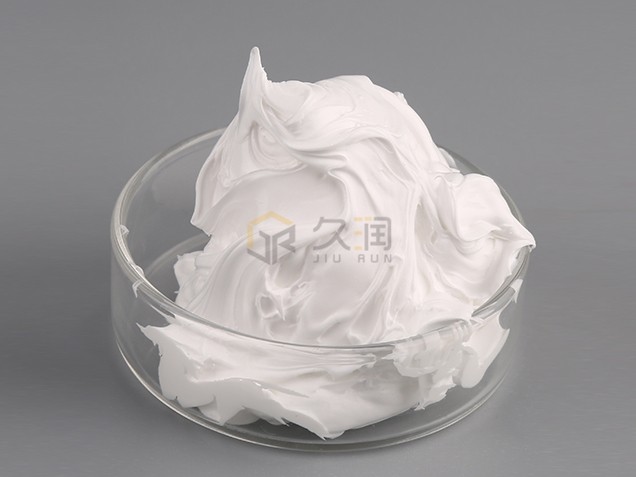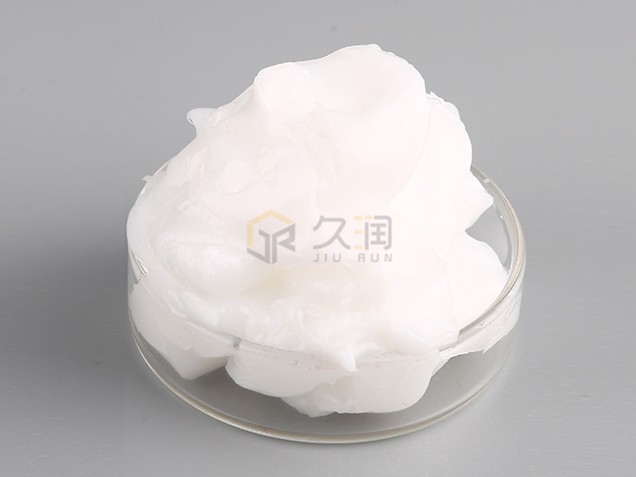What are the different characteristics of grease products?
2020-11-23 15:34:29
There are many different products in lubricating grease with different characteristics. In addition to general physical and chemical properties, each type of lubricating grease should also have special physical and chemical properties that characterize its use characteristics. The higher the quality requirements, or the more specialized oil, the more prominent its special physical and chemical properties. Let's talk about the different characteristics of grease products? What are the characteristics of grease products?

1. Oiliness and extreme pressure properties of grease
Oiliness is that the polar substances in the grease form a solid physical and chemical adsorption film on the metal surface of the friction part, so as to play the role of high load resistance and anti-friction and wear resistance, while the extreme pressure property is that the polar substances of the grease are in the friction part. On the metal surface, it is decomposed by tribochemical action under high temperature and high load, and tribochemical reaction occurs with the surface metal to form a soft (or plastic) extreme pressure film with low melting point, so as to be resistant to impact and high load. High temperature lubrication.
2. Anti-foaming property of grease
During the operation of the grease, due to the presence of air, foam is often generated, especially when the oil contains surface-active additives, it is more likely to generate foam, and the foam is not easy to disappear. The foam generated during the use of grease will destroy the oil film, cause the friction surface to sinter or increase wear, and promote the oxidation and deterioration of the grease. It will also cause air resistance in the lubrication system and affect its circulation. Therefore, anti-foaming property is an important quality index for greases and the like.
3. Corrosion and rust of grease
Corrosion of steel and other non-ferrous metals is often caused due to the oxidation of oil or the action of additives. The corrosion test is generally to put the copper strip into the oil, put it at 100 ℃ for 3 hours, and then observe the change of the copper; while the rust test is that under the action of water and water vapor, the steel surface will corrode, and the rust resistance is determined by using the Add 30ml of distilled water or artificial seawater to 300ml of test oil, then place the steel rod in it, stir at 54°C for 24 hours, and then observe whether the steel rod is rusted. The oil should have anti-metal corrosion and anti-rust effects, which are usually required to be tested in industrial grease standards.

4. Rubber sealing of grease
In hydraulic systems, rubber is used as seals in most cases. Oil products in machinery inevitably come into contact with some seals. Oils with poor rubber sealing properties can cause rubber to swell, shrink, harden, and crack, affecting its performance. Therefore, it is required to have good adaptability between oil and rubber. The hydraulic oil standard requires a rubber sealing index, which is measured by the change of a rubber ring of a certain size after being immersed in oil for a certain period of time.
5. Air release value of grease
There is this requirement in the hydraulic oil standard, because in the hydraulic system, if the air dissolved in the oil cannot be released in time, it will affect the accuracy and sensitivity of the hydraulic transmission, and in severe cases it cannot meet the requirements of the hydraulic system. . The method for measuring this property is similar to anti-foaming, but it measures the time it takes for the air (fog) dissolved inside the oil to be released.
6. Oxidative stability of grease
Oxidation stability indicates the anti-aging performance of grease. Some industrial greases with long service life have this index requirement, so it has become a special performance required by these types of oils. There are many methods for determining the oxidation stability of oil products. Basically, a certain amount of oil products are oxidized at a certain temperature for a certain period of time in the presence of air (or oxygen) and metal catalysts, and then the acid value and viscosity of the oil products are determined. changes and the formation of sediments. All greases have different tendency to auto-oxidize according to their chemical composition and different external conditions. Oxidation occurs with the use process, so some aldehydes, ketones, acids, colloids, asphaltenes and other substances are gradually formed.
7. Anti-emulsification of grease
In the use of industrial grease, it is often inevitable to mix some cooling water. If the anti-emulsification of the grease is not good, it will form an emulsion with the mixed water, so that the water is not easy to be released from the bottom of the circulating oil tank, which may cause lubrication. bad. Therefore, demulsibility is a very important physical and chemical property of industrial grease. For general oil products, 40ml of test oil and 40ml of distilled water are vigorously stirred at a certain temperature for a certain period of time, and then the oil layer-water layer-emulsified layer is separated into 40-37-3ml of time; industrial gear oil is to mix the test oil and water, Stir for 5 minutes at a certain temperature and 6000 r/min, leave it for 5 hours, and then measure the number of milliliters of oil, water and emulsified layer.
8. Hydrolytic stability of grease
Hydrolytic stability characterizes the stability of oil products under the action of water and metals (mainly copper). When oil products have a high acid value or contain additives that are easily decomposed into acidic substances in contact with water, this index is often unqualified. Its measurement method is to add a certain amount of water to the test oil, mix and stir the copper sheet at a certain temperature for a certain time, and then measure the acid value of the water layer and the weight loss of the copper sheet.
The above are some characteristics of grease products, users can choose more suitable grease products according to the characteristics.

